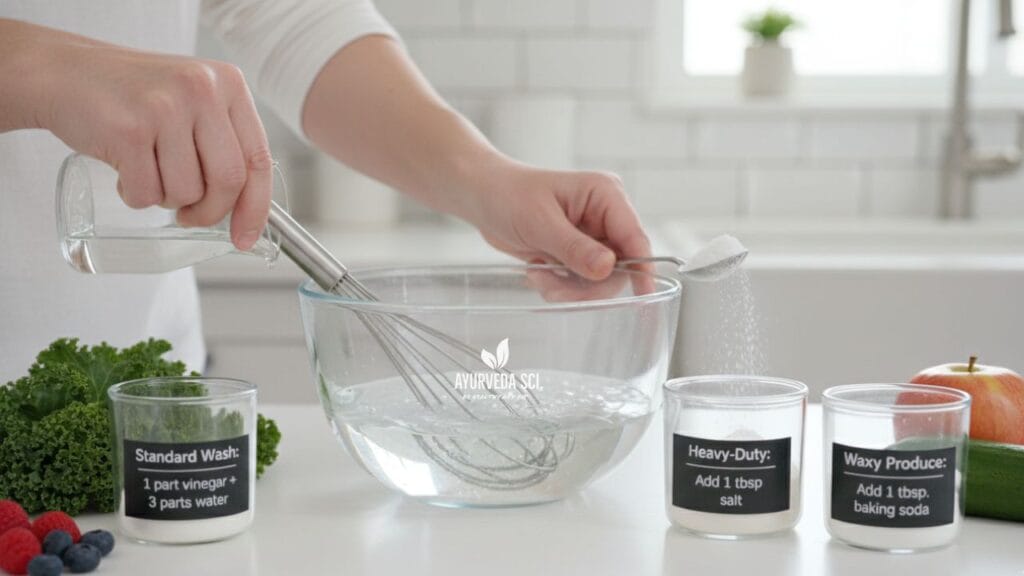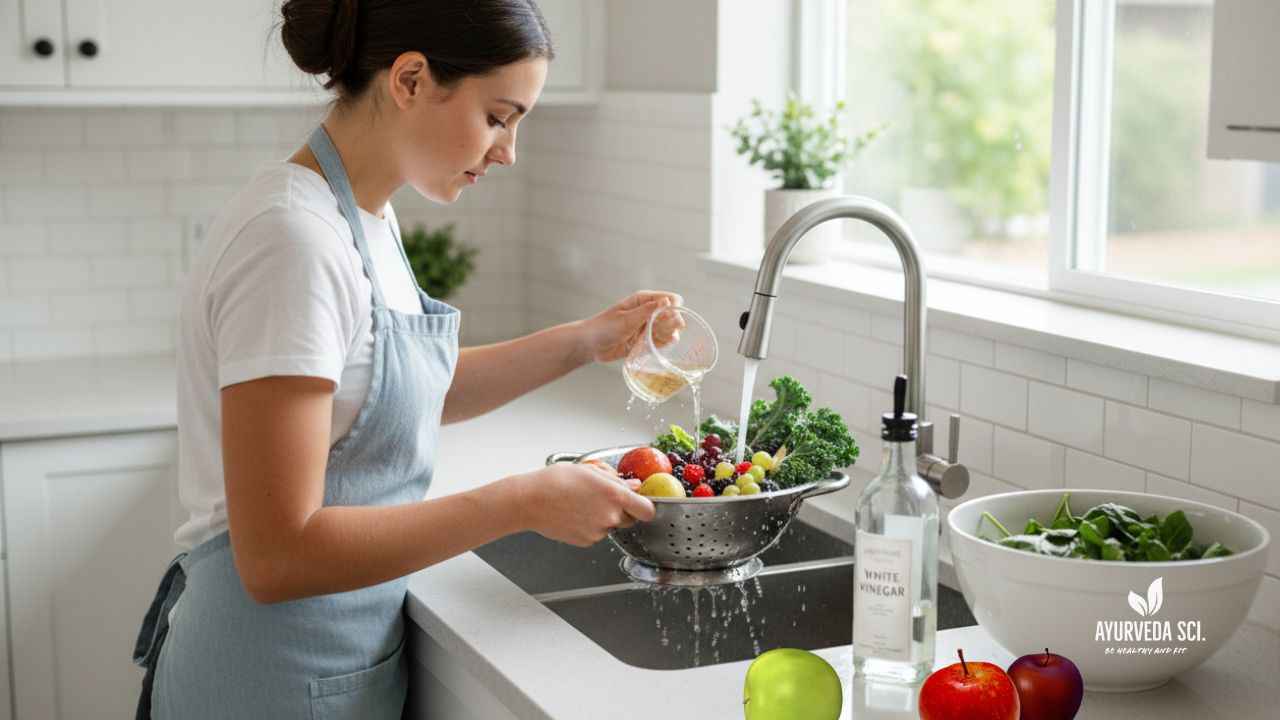You love fresh berries, apples, and greens—but you don’t love the idea of eating pesticide residues, wax, dirt, or the invisible bacteria that can hitch a ride from farm to table.
Rinsing under tap water helps, but it doesn’t remove everything. Enter the simple, cheap, and ridiculously effective vinegar fruit wash. In less than 5 minutes you can make a solution that removes up to 98 % of common bacteria and significantly reduces pesticide residues—without leaving your fruit tasting like a salad dressing.
The Science in 30 Seconds
- Vinegar (acetic acid) disrupts bacterial cell walls and dissolves many pesticide molecules.
- A 2017 study in Food Control found that a 10-minute soak in a vinegar solution removed 98 % of surface bacteria like Salmonella and E. coli—far better than plain water.
- Another study from the University of Maine showed that a vinegar rinse removed 98 % of the fungicide thiabendazole from apples (water alone removed only 20 %).
- Bonus: It also melts away that waxy coating on apples, cucumbers, and citrus so your produce looks and tastes fresher.
The Best Vinegar Wash Recipe (Tested & Doctor-Approved)

Ingredients
- 1 cup white distilled vinegar OR apple cider vinegar
- 3 cups cool water
- Large bowl or salad spinner
- Optional: 1 tablespoon salt (helps draw out tiny worms from berries)
- Optional: 1 tablespoon baking soda (extra scrubbing power for waxy produce)
Instructions
- Mix the solution in a clean bowl:
- Standard wash: 1 part vinegar + 3 parts water
- Heavy-duty (berries, leafy greens): Add 1 tbsp salt
- Waxy produce (apples, cucumbers): Add 1 tbsp baking soda
- Submerge your produce completely.
- Delicate berries: 30–60 seconds
- Sturdy fruits/veggies (apples, peppers, grapes): 5–10 minutes
- Leafy greens: Swish for 30 seconds, then let soak 2 minutes
- Agitate gently—use your hands or a salad spinner insert to swirl.
- Rinse thoroughly under cool running water for 30 seconds. (This removes any vinegar taste.)
- Dry completely with a clean towel or salad spinner. Moisture = mold, so don’t skip this step!
Quick Reference Chart
| Produce Type | Soak Time | Add Salt? | Add Baking Soda? | Notes |
|---|---|---|---|---|
| Berries (blueberries, strawberries) | 30–60 sec | Yes | No | Removes tiny worms & mold spores |
| Grapes | 5–10 min | Yes | No | Pull off stem to release hidden dirt |
| Apples, pears | 10–12 min | No | Yes | Removes wax + 98 % thiabendazole |
| Leafy greens | 2 min | Yes | No | Lift out; don’t pour through colander (dirt settles back) |
| Peaches, plums | 1–2 min | No | No | Gentle—fuzzy skin is delicate |
| Broccoli, cauliflower | 2 min | Yes | Yes | Gets into crevices |
Pro Tips for Maximum Clean
- Use cold water—warm water can make some produce wilt.
- Don’t overcrowd the bowl—work in batches if needed.
- Wash right before eating, not when you bring groceries home (extra moisture shortens shelf life).
- Store smart: After washing and drying, keep berries in a paper-towel-lined container to absorb excess moisture.
Common Myths—Busted
- “Commercial produce washes are better.” → Nope. Studies show plain vinegar works just as well (or better) and costs pennies.
- “Vinegar makes fruit taste sour.” → Only if you skip the rinse step.
- “Organic produce doesn’t need washing.” → Wrong. Organic still gets dirt, bacteria, and natural wax.
Cost Breakdown (You’ll Laugh)
- White vinegar: ~$0.10 per wash (check out white Vinegar on Amazon)
- Water: basically free
- Total: 10 cents to clean an entire sink full of produce.
Compare that to $5–8 for a bottle of commercial veggie wash that lasts 10 washes.
The Bottom Line
A homemade vinegar fruit wash is the single easiest upgrade you can make to your kitchen routine. It takes 5 minutes, costs almost nothing, and gives you cleaner, safer, longer-lasting produce—backed by real science.
Next time you bring home a haul of blueberries (or any fresh produce), skip the lazy tap-water rinse. Please give them a quick vinegar bath instead. Your taste buds—and your gut—will thank you.
(This article has Affiliate links. If you buy from that link, we may get a small commission —it doesn’t cost you extra, but it helps us run this blog.)

